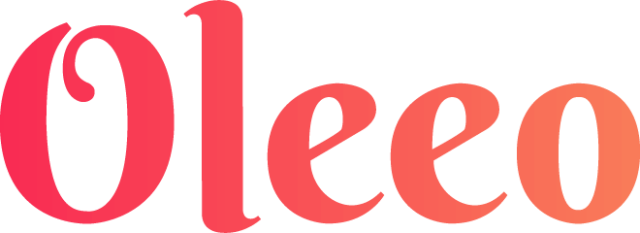How Diverse and Inclusive Is Your Organization?

In 2022, diversity is no longer a buzzword — it’s an expectation. More than 3 out of 4 job seekers and employees (76%) report that a diverse workforce is an important factor when evaluating companies and job offers.
But many companies continue to struggle with making diversity and inclusion a reality in their workplaces. From attracting the best candidates to promoting a company culture of inclusion, building diversity in your organization from the ground up takes a lot of work.
If you’re looking to improve your diversity hiring practices, the shift can be just as rewarding as it is challenging. It’s time to get to the root of the issue and assess your organization’s recruitment practices. You can efficiently optimize your hiring habits to create a truly diverse and equitable workplace with the right diversity recruitment solutions.
What Is Diversity and Inclusion in the Workplace?
Think of diversity as building a choir. Each singer has their own skills, strengths, and unique voice. When they all come together, those individual skills contribute to the overall success of their group.
Employees have their unique strengths. They also come from different backgrounds — race, ethnicity, religion, sexual orientation, gender identity, class, etc. — and have different experiences. Workplace diversity taps into these differences as strengths, allowing different backgrounds, skillsets, and personalities to drive an organization’s success.
While workplace diversity means bringing new perspectives to the table, inclusion is about making those diverse voices feel welcome. When a workplace is inclusive, everybody feels valued, respected, and included in the workplace culture. Each employee should feel empowered knowing that their perspectives are a vital part of the organization.
Both diversity and inclusion are equally important. Just focusing on diversity recruiting means you’ll have a diverse workforce, but they might not feel supported or valued enough to stay.
Why Does Diversity and Inclusion Matter So Much?
 The case for DE&I in the workplace is stronger than ever. The concept is gaining traction in industries across the board as organizations recognize the untapped potential in diversity recruiting.
The case for DE&I in the workplace is stronger than ever. The concept is gaining traction in industries across the board as organizations recognize the untapped potential in diversity recruiting.
When terms like “diversity” and “inclusion” come up, it’s easy for human resources to downplay the idea as just another box they can check off their list for workplace growth. Few companies are truly harnessing the potential of diverse hiring practices, and a deep dive into diversity and inclusion initiatives reveals some challenges for companies to overcome.
Overcoming Unconscious Bias
In recruiting specifically, unconscious bias is when implicit stereotypes distort hiring decisions. This means that while a hiring team may not know that they’re making decisions driven by bias, their opinions could influence decisions more than they realize. In the early hiring stages, even just looking at a candidate’s name, picture, resume, or hometown can lead to unconscious bias. This may express itself as just a preference in a hiring manager — seeing one qualified candidate as more of a “culture fit” than another. Unconscious bias can even influence job description phrasing, which may discourage diverse talent from applying in the first place.
This means that even if your organization strives towards diversity, unconscious attitudes during the hiring process could undermine your diversity initiatives.
Taking a Data-Driven Approach
It’s not enough to simply decide that your workplace will become more diverse. To successfully implement diverse recruiting, you need to hone your strategies through data. Data can help you select the most effective sources, refine your recruiting message, and improve the interview process to hire and retain the best in your diverse talent pool.
Some critical diversity and inclusion metrics include:
- Selection: Tracking the success of underrepresented candidates during the hiring process.
- Representation: Analyzing the number of employees from diverse groups compared to industry benchmarks.
- Development: Tracking progression, promotion, and development opportunities by demographic group.
- Retention: Comparing the average retention rate of underrepresented employees to the rest of the workforce.
- Pay and benefits: Using compensation data to assess salary and financial incentives earned by diverse groups.
Simply put, it’s best to take the chance for human error and bias out of the equation and focus on data instead. If driven by concrete data, attempts to overhaul the talent acquisition processes will be much more successful.
Avoiding the One-Size-Fits-All Approach
Diversity might be an umbrella term, but that doesn’t mean every “diverse” worker is the same. From gender to race to religious background, not every underrepresented group will have the same goals, values, and circumstances.
Any effective recruiting, including diversity recruiting, needs to be individually targeted. It might be more time-consuming, but a personalized approach will help you reach top talent and influence their decision.
Making Diverse Talent Feel Comfortable
Getting diverse candidates through the door is easier said than done. Many marginalized candidates will have some understandable concerns about workplaces, and they may not be willing to commit until you prove they’ll be a great fit once hired. Fears of tokenism, microaggressions, or a lack of cultural fit can follow job seekers through the interview process.
It’s your job as the recruiter to do your market research and identify the concerns and fears of each subgroup. Once you’ve identified these diversity-related issues, it’s time to address them. This can mean presenting information about your inclusivity initiatives, crafting counterarguments, making changes to your workplace environment, or showcasing your DE&I credentials as part of your employer brand. The key here is to acknowledge that your diverse candidates are different from the average worker. They may have been treated differently than their coworkers in other roles and are approaching this interview with those experiences in mind.
The Benefits of a Diverse Workforce
 When companies realize the potential of integrating diversity and inclusion into the recruiting process, they can reap significant rewards.
When companies realize the potential of integrating diversity and inclusion into the recruiting process, they can reap significant rewards.
A diverse and inclusive environment will help employees feel more connected at work. When employees feel like they belong, they work more seamlessly and productively:
- Diverse companies see 2.3 times higher cash flow per employee.
- Companies with a more diverse management team had a 19% increase in revenue compared to less diverse companies.
- Diverse teams have a 60% improvement in decision-making.
- Companies with more racial and ethnic diversity are 35% more likely to outperform their competitors.
- Businesses in the top quartile for racial, ethnic, and gender diversity see a 25% higher chance of being more profitable in their industry than the national median.
However, the benefits can go far beyond your bottom line. Expanding your recruitment searches to more diverse candidates can expand the candidate pool, increasing your chances of finding the perfect fit. Opening up to new perspectives and backgrounds can also push your workforce to be more innovative.
It’s more important than ever to know how to retain your employees, considering the mass resignations. Employees who feel included are more likely to stay and go the extra mile for their company. When companies support diversity initiatives, 83% of millennials are more actively engaged in their work.
Diversity Recruiting Solutions: How Oleeo Can Help
Using data in your Diversity Sourcing can move your recruiting efforts beyond another box to check. It can enable your organization to conduct a fair review of just how successful your workplace is at diversity and inclusion, from early hiring to interviewing to onboarding. Where is your strategy falling short of its goals? Which areas need the most work, and how can you best address them?
That’s where Oleeo comes in. Oleeo’s Diversity Recruiting Platforms can help you create the ultimate Data Driven Recruitment strategy.
For example, our Oleeo Insights: Diversity Benchmarks gives recruiters access to broader population diversity data by region and industry. Comparing your in-house statistics to the benchmark figures can tell you a lot about which areas of your organization need improvement when it comes to diversity. You can inform your recruitment strategy with hard numbers by honing in on gaps in your current hiring practices.
Through the recruiting software’s visual breakdown of recruitment analytics, you can honestly assess how well your hiring practices manage different subgroups. For example, an assessment of a company’s gender-based hiring might show whether or not they’re attracting female candidates and how well they fare in the Talent Pipeline. This assessment can then be compared to the demographics of the communities you’re recruiting from.
These stats can help you identify areas your organization might fall short in different Diversity Recruiting Metrics. Using this data, you can better optimize your Diversity Recruiting strategy to create the diverse and inclusive workforce you’ve been aiming for.
Diversity Recruiting Solutions for the Future of Your Workplace
 With the right tools and data-backed efforts, you can make the final push toward a more equitable workplace. Your organization may be reaping the business benefits, but your employees get the ultimate reward — a workplace where they feel valued, recognized, and comfortable.
With the right tools and data-backed efforts, you can make the final push toward a more equitable workplace. Your organization may be reaping the business benefits, but your employees get the ultimate reward — a workplace where they feel valued, recognized, and comfortable.
Ready to invest in data-driven solutions to improve your diversity hiring? Oleeo’s Diversity Recruiting Software leverages automation and data analysis to help you optimize your hiring process. Learn more about our Diversity Benchmark solutions and book a demo today.



